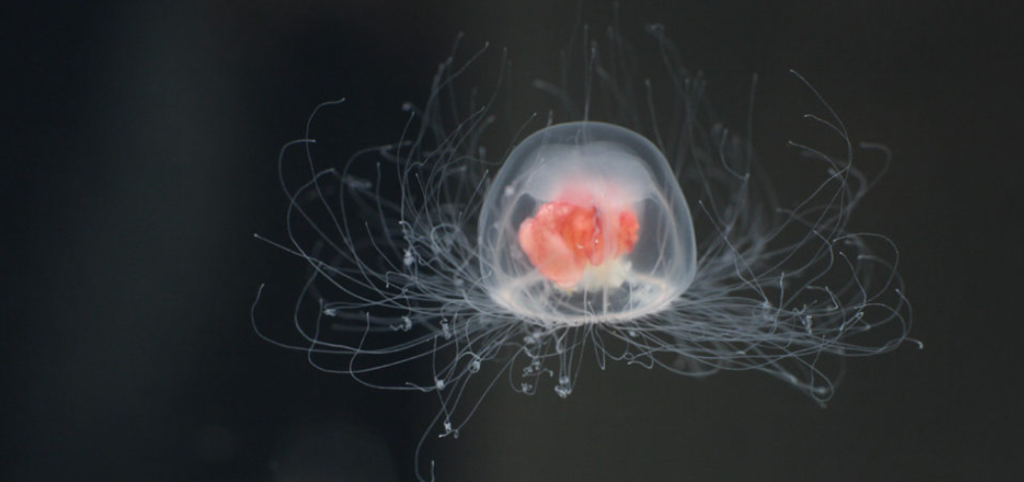
The widespread consensus is that death occurs at some point after birth.1. Scientists have discovered in recent years that this is not the case for the Turritopsis dohrnii jellyfish, for which regeneration occurs after birth and may even result in immortality. The immortal jellyfish, or Turritopsis dohrnii, was the first animal shown to be capable of returning to its sexually immature stage of life.
“Eternal” life cycle
When an adult male jellyfish squirts his sperm into the water, part of it enters the female and fertilizes her eggs, giving rise to immortal jellyfish. The fertilized eggs develop into planulae, which are seafloor-dwelling larvae that eventually form a colony of polyps.2. The immortal jellyfish resembles a little coral branch at this stage of its existence. The medusae, or jellyfish as most people refer to them, are subsequently released from the polyp’s branches and reach maturity in a matter of weeks. The mature medusa is just 4.5 mm long when completely developed. It features a translucent bell with up to 90 tentacles around it, allowing you to glimpse its crimson guts.
The medusa will revert to a polyp in the event of danger or stress of any type. More medusae, which are genetically identical to the original adult, are subsequently released by that polyp. Naturally, if Turritopsis is destroyed in any other manner, it might still die. As far as we know, however, it might continue to exist indefinitely by cloning itself if certain conditions weren’t met.
Consequences
According to molecular paleobiologist Kevin J. Peterson, jellyfish are very close to humans genetically despite lacking a heart and brain. As a result, studies on the regeneration mechanism of Turritopsis may be beneficial for the study of lifespan and cancer. “Transdifferentiation” is the process by which an adult medusa with one function may change back into a polyp; an adult cell with one function can become a different kind of cell with a different purpose. In stem cell research, this kind of cell recycling may be used to replace diseased human cells.
However, because the immortal jellyfish clones itself rather than really living forever, it cannot be the secret to eternal life. This raises the ambiguous issue of whether an original person is still identifiable from a clone.



